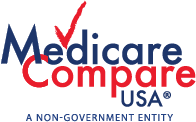Medicare vs. Medicaid
Find Plan Options/Medicare Plans
Medicaid Basics
Like Medicare (Title XVIII of the Social Security Act), The Social Security Amendments of 1965 created Medicaid by adding Title XIX to the Social Security Act. Both are federally established, government run programs meant to be a social safety net for those who need help with similar sounding names. However, the programs are separately operated and funded, and primarily serve different groups
MEDICARE
Medicare provides health insurance program for individuals over 65 years old, or under 65 with a serious or permanent disability, no matter what an individual’s income may be.
MEDICAID
Medicaid is a joint state and federal health insurance program for individuals with low incomes and/or some disabilities. For more about Medicaid, go here: www.medicaid.gov/about-us/program-history/index.html
Additionally, there are key differences in which services are covered and how cost sharing is implemented.
- Original Medicare (Part A + Part B) does not cover routine dental and vision care services, while Medicaid may cover treatment and preventative care, depending on the state.
- Medicaid can cover the cost of nursing homes, assisted living facilities, and other long-term care options for an extended period, whereas Medicare only provides limited coverage for long-term care.
- Healthcare providers available to individuals on Medicaid may differ from those available to individuals on Medicare.
- Medicare is run by the federal government, ensuring a level of uniformity (e.g., all A-N Medigap plans must be the same, and all Medicare Advantage plans must cover everything Original Medicare does). Medicaid is governed by the states, and therefore while the federal government makes some benefits mandatory, other benefits are optional at the state level making coverage and costs different across states.
Understanding Your Options
It can be confusing when considering which program to enroll in. This section is here to help! Consider the following information:
If you qualify for both Medicaid and Medicare:
Individuals who qualify for both Medicaid and Medicare are considered “dual eligible” and can enroll in both Medicaid and Medicare. Importantly, you must first enroll in Medicare Part A and Medicare Part B to then receive help with benefits and assistance with paying Medicare premiums. Both programs will work together to provide health coverage and lower medical costs. Individuals that are dual eligible can cover costs with state-run Medicare Savings Programs (MSP), which provide help with premiums, deductibles, coinsurance, and copayments (depending on income level and the specific MSP). Some programs coverage means eligible individuals may have no copayments or cost shares. If you are unsure if you qualify as Medicaid eligible, find out more here: www.healthcare.gov/medicaid-chip.
If you already have Medicaid:
If you have Medicaid, you should still sign up for Medicare Part A and Medicare Part B. Medicare will pay first, and Medicaid will pay second. Medicaid may be able to help pay your Medicare out-of-pocket costs (like premiums, deductibles, coinsurances, and copayments). Some Insurers offer Medicare Advantage plans called “Special Needs plan (SNP)” or “Dual Special Needs plan (D-SNP)” health plans for dual eligible individuals that operate like other Medicare Advantage plans where Medicaid can help you with your costs and monthly premium. These plans usually offer additional benefits that neither Medicare nor Medicaid offer, but are not available in all areas of the U.S. Dual eligible individuals are also automatically enrolled in the Extra Help program to help with their prescription drug costs. Medicare beneficiaries who are also eligible for Medicaid generally don’t purchase Medigap insurance since Medicaid will cover the cost of their healthcare expenses and thus “filling the gap.” In fact, it is illegal for anyone to sell you a Medigap policy if they already know you have Medicaid (except in very specific situations).
